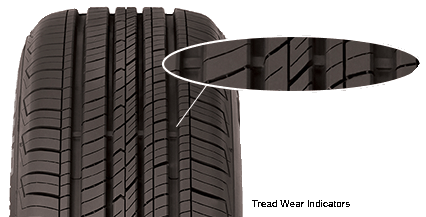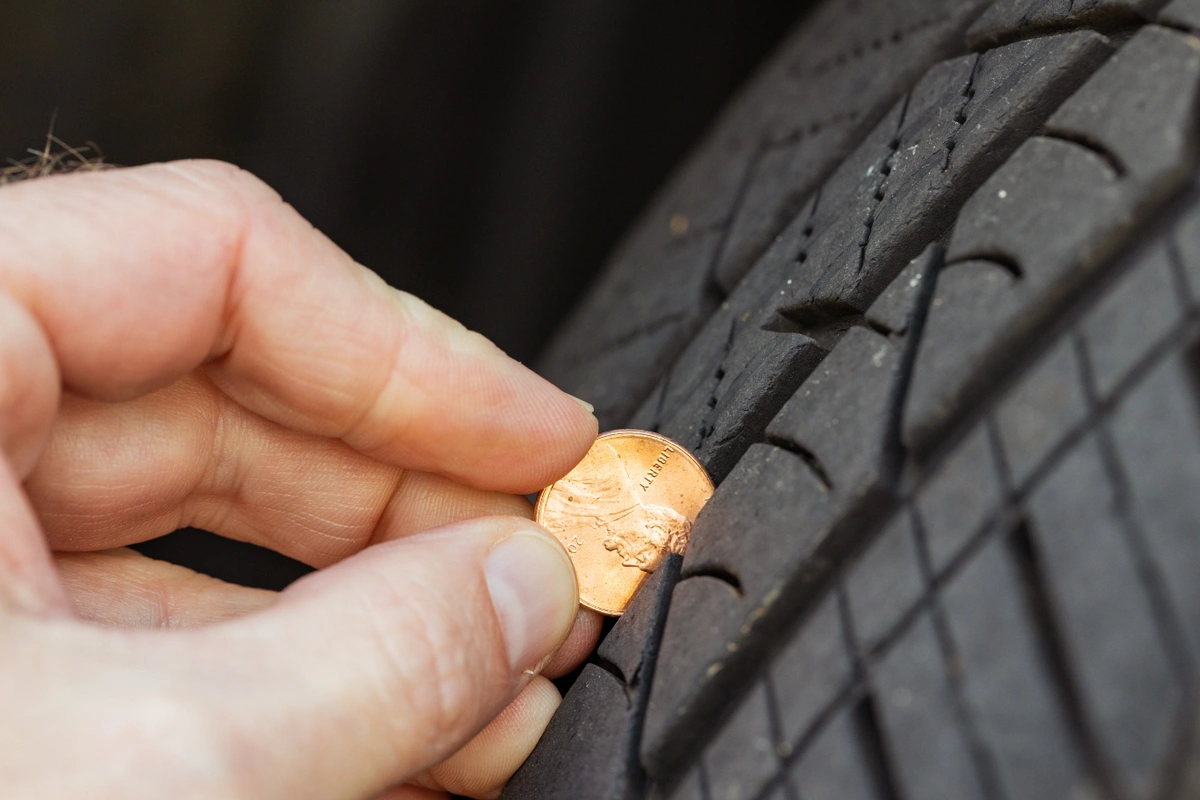Your Shopping Cart
Your cart is empty.
Subtotal ( items)
Instant Rebate Applied:
Promo Code Applied: ID.me Discount Applied:
Have a Promo Code?
Size:
Item
Item
Selected for:
/ each
Add-Ons
Wireless air pump capable of pumping up to 150 psi with 2000 MAH power bank.



Fully protect your clothes and vehicle interior during transportation of your tires. For Tires up to 31" tall and wheels up to 22".
Per sensor
Add TPMS Sensors
/per sensor
Please confirm the make, year, model and trim of the vehicle you want to purchase for:
How many sensors do you need?
The vehicle you have selected is not compatible with aftermarket TPMS Sensors.
Enter a different vehicle to add TPMS sensors

 Front Tire Size:
Front Tire Size:
 Rear Tire Size:
Rear Tire Size:
 Your Vehicle:
Your Vehicle:
Pros & Cons of Staggered Fitment

Attractive Design

Improved Handling

Improved Cornering
Bumpier Ride
Poor Traction in Snow
How do I find my tire size?



Need help?
 Your Vehicle:
Your Vehicle:
Pros & Cons of Staggered Fitment

Attractive Design

Improved Handling

Improved Cornering
Bumpier Ride
Poor Traction in Snow
How do I find my tire size?



Need help?
Pros & Cons of Staggered Fitment

Attractive Design

Improved Handling

Improved Cornering
Bumpier Ride
Poor Traction in Snow
Need help?
Need help?
How do I know if I have an LT tire?

 Your Vehicle:
Your Vehicle:
Sorry, we could not find any available
wheels for your sizing selections.
Need help?
How Often Should You Replace Your Tires?
By Tire Agent Staff
November 22, 2023
(Updated. Original post date Dec. 6, 2021)
TL;DR? This guide answers these questions:
- How old can tires be and still be safe? Most tires have a life expectancy of about 6 years.
- When should I change my tires? When they are older than 6 years, or when their tread depth is 2/32 of an inch or less.
- How do I measure tire depth? You can buy a tire depth measuring kit, or you can use a penny. Insert it upside down, and if you can see the top of Lincoln's head, you need new tires now.
- Tire replacement: How often? Every six years or when the tread depth is 2/32".
- Do I need to replace tires at 3/32, 4/32, 5/32? Probably, soon, and not yet.
- How long can you drive on 2/32 tires? Long enough to get to off the road safely. Replace your tires now.
When Should I Replace My Tires? And How Do I Know When I Need New Tires?
This guide explains how to know when it's time to replace your tires based on how old your tires are, how many miles, and a number of other factors. The answer to how often you need to replace your tires depends on a bunch of things:
- Your driving style — Aggressive starts and stops, for example, will wear down your tires’ tread.
- Tire type — Softer tires, such as summer tires, are designed for road grip, so their tread wears faster.
- Treadwear rating — The higher the number, the longer the treadwear is expected to last. Our article, What Does UTQG Tire Rating Mean, explains treadwear.
- Tire age — Tires have a finite shelf life, and they all have expiration dates, typically 6 years from the date of manufacture. Here's how to find when and where your tires were made.
- Inactivity — That’s right: A tire that sits for a long time and doesn’t get used is susceptible to dry rot, which we explain later.
The real question, though, is how to tell when and if your tires need to be replaced, which is what we cover next.
Tire Age
Do tires expire? How Often Should You Get New Tires?
You should replace your tires every 6 to 10 years, or after driving 40,000-100,000 miles. Even if they appear in good condition, tires should not be used for more than 10 years. Regular checks and proper maintenance can help extend their lifespan. When they are at about 50% wear, it's a sign to start considering new tires. After six years at the most, make sure to assess their condition and replace if needed.
As we explain in “Tire Number Meanings,” every tire sold in the United States has to follow DOT tire age laws. The US Department of Transportation requires tire makers to mark all tires with the week and year the tire was made. To find your tire's "birthday," look for the DOT marking. The last four numbers represent the tire manufacturing date.
For example, a tire marked DOT CPEX 3ET 0318 was made in January (third week) of 2018.
Tires will dry and rot faster if they sit for a long time in one position, under the weight of a vehicle, exposed to weather, and aren’t driven. For people who live in hot and dry climates, the risk for cracking and sidewall weathering is even greater.
It’s also important to keep your tires properly inflated, so they last as long as possible. Driving on overinflated or underinflated tires is not only dangerous, but it’s also bad for the rubber. Tire pressure guides are typically published on a sticker on the inside of the driver’s door. You can also find them in your owner’s manual.
Tread Depth
What tread depth to replace tires?
How do you know when you need new tires? Typical new tires have a tread depth of 10/32 of an inch (10/32”), but some mud tires, all-terrain tires, and off-road tires have deeper depths closer to 15/32”. The standard depth for replacing tires is before the depth reaches 2/32” — at 2/32” or lower, the tire is bald and dangerous.
- Sufficient tread: 6/32” to 10/32” (6 mm to 8 mm) — the tires are safe for driving
- OK tread: 4/32” to 5/32” (3 mm to 5 mm) — the tires will soon need to be replaced, especially if you drive in snow, ice and rain.
- Replaceable tread: 3/32 tread depth (2 mm) or lower — it’s time to replace your tires!
How to measure tire tread depth
You can buy a tire tread depth gauge for under $10 from any auto supplier, or you can use the coin test.
The coin test uses a Lincoln penny to measure a tire’s depth. The rule says: Place a penny Lincoln-head-down in the groove of a tire and, if Honest Abe’s head disappears, your tread depth is deep enough for safe driving. However, if you see the top of his head, you’re less than 2/32” of an inch, and it’s time to replace those tires.
Here’s the rub: Do not check just one spot of the tire. Run it along several inches of the tire because tires can wear unevenly, depending on your vehicle, driving style, and terrain. If any part of the tire is worn, it’s time to replace it.
Tread Replacement Miles
How many miles on tires before replacing?
Newer car models have built-in tire pressure monitoring systems (TPSM) that alert drivers when their tires are underinflated. If you see this light, you need to check your tire pressure. If it is low, fill the tire to the manufacturer’s recommended pressure.
How many miles should a tire get? A manufacturer’s warranty is a slight indication to how long tires are expected to last, in terms of miles. The honest answer is, there is no way to tell how many miles you will be able to drive on a tire.
Best Time to Replace Tires
How do you know when you need new tires? Do not go solely by mileage when deciding when it's best to change your tires. Follow these simple rules:
- First and foremost, if your tires have 2/32” or less tread depth, it is time to replace them.
- If your tires are more than 6 years old, replace them.
- If your tires have exceeded the mileage warranty (if they came with one), it might be time to replace them.
- If you hit the tires’ wear bars, which we’ll explain later in this article, it’s time to replace the tires.
- If you are an aggressive driver, you’ll need to replace your tires sooner than the average driver.
Replacing Tires Based On Tire Type
According to most manufacturers, and even the law in most areas, your tires should be replaced when the tread depth reaches 4/32” in the winter and 2/32″ in the summer. If your tread depth wears to those levels, your tires are considered bald and a safety hazard.
When to replace winter tires
The same rules for checking tread depth apply to winter tires as they do for all vehicle tires. However, you should replace winter tires when they are half worn, long before they wear to 2/32”. Why? Winter tire treads are designed to get you safely through slush, snow and ice. Their deep grooves are engineered to push snow and slush away from your vehicle, so you don’t slip and slide.
By the way, to avoid dry rot and get the most from your winter tires, during the off season, store your tires in a cool, dark and dry place, not outside where they are exposed to the elements.
When to replace summer tires
Apply the same tread depth standards to your summer tires as you do for the three-season or all-season tires. When tread depth gets below 4/32” start shopping for tires. Follow the same storage rules as you would for any tire — store them inside if possible, protected from weather conditions.
When to replace mud tires and all terrain tires
All-terrain and mud tires need much more than 2/32” to be effective, and because they’re built for off-roading, they might wear unevenly. While the rule says 2/32”, we advise replacing mud and all-terrain tires when they are at about 50% wear. So, if the tire measured 15/32” when it was new, you should start shopping for replacements when they wear to about 7/32”.
What are tire wear bars?
Modern tires have a built-in indicator that tells you when it’s time to replace them. They’re called wear bars, and they are little tread marks that are placed throughout the tires at approximately 2/32 of an inch, which is the hazard point of a tire. Learn more about tire wear bars.

Source: Cooper Tire
Extending Tire Life
To extend the lifespan of tires on cars, do these things:
- Always ensure your tires are properly inflated. Have your auto shop check tire pressure each time you have an oil change.
- Rotate, balance and align your tires regularly
- Rotate every 3,000 to 5,000 miles
- Balance every 5,000 to 6,000 miles
- Align every 6,000 miles or twice a year
- Practice good start and stop habits when you drive. Peeling out on a start and slamming on brakes is bad for your tires (and your vehicle).
- Have your tires checked immediately if you notice pulling, vibrating, or strange sounds.
Photos
245825692 | Chad Robertson | Dreamstime.com
Photo 26141697 | Supergenijalac | Dreamstime.com
Next Post:
Best Tires for MinivansHow to Qualify for the $50 Offer
- Add items to your cart and begin checkout.
- Select PayPair and apply for financing.
- If you’re approved by a participating lender, you’ll see a $50 promotional rebate applied to your order total.
-
To receive the $50, you must:
- Complete your purchase with a qualifying lender,
- Agree to the payment terms,
- And make the required number of consecutive on-time payments, as specified by the lender.
Note: Offer available only through select lenders. Additional eligibility requirements and conditions apply. Rebate may be issued after verification of qualifying payment activity. Terms subject to change.
How to Purchase Tires and Wheels
With a Payment Plan
Tire Agent's payment plans make it easy to get the best partial or full set of tires and wheels for your vehicle.
It's fast, secure and won't affect your credit score
Match with multiple lenders
Why Choose PayPair?
PayPair’s Partners and Plans

No Money Down

No Money Down

No Credit Needed*

No Money Down

$1 to Start!*

No Money Down

No Credit Needed*

$1 to Start!*

No Money Down
Other Payment Plans

$0 to Little Down

Pay with your bank account

Simplified checkout experience

Faster and easier than using cards or cash

Simplified checkout experience

Faster and easier than using cards or cash
*SNAP: The advertised service is a lease-to-own agreement provided by Snap RTO LLC. Lease-to-own financing is not available to residents of Minnesota, New Jersey and Wisconsin. NO CREDIT NEEDED: Not all applicants are approved. While no credit history is required, Snap obtains information from consumer reporting agencies in connection with applications, and your score with those agencies may be affected. PAYMENT PLAN: The standard plan consists of renewable lease terms. To exercise an early ownership, consumers must make regular payments on time and schedule additional payments via the customer portal or by contacting Customer Care at 1-877-557-3769. KATAPULT: The Promotional Initial Payment (plus any applicable taxes and fees) is due at lease signing. Your lease-purchase payment amount will be determined after you select your product(s). You will not acquire ownership of the product(s) if the total amount necessary to acquire ownership is not paid. The Promotional Initial Payment does not reduce the cost of the lease-purchase agreement. The Promotional Initial Payment is only available when shopping at Tire Agent through the Katapult mobile app and at Tire Agent’s website. Product pricing subject to change and availability. Disclosure: 90-day early purchase option (EPO) terms and conditions apply: 90-Day (3 months in CA) You can buy out your lease-to-own agreement within the first 90-days. This amount includes the cash price, plus the lease-to-own cost for the first 90-days. Taking advantage of the 90-day purchase option will save you the most money! PROGRESSIVE: Ownership by rental/lease agreement with Progressive Leasing costs more than the retailer’s cash price. Select items only. Cancel or purchase early at any time. Not available in MN, NJ, VT, WI, WY. Progressive Leasing obtains information from credit bureaus. Not all applicants are approved. Standard agreement offers 12 months to ownership. 90-day purchase options cost more than the retailer’s cash price (except 3-month option in CA). To purchase early or to cancel lease, you must call 877-898-1970. Retailer cannot activate early purchase options.


